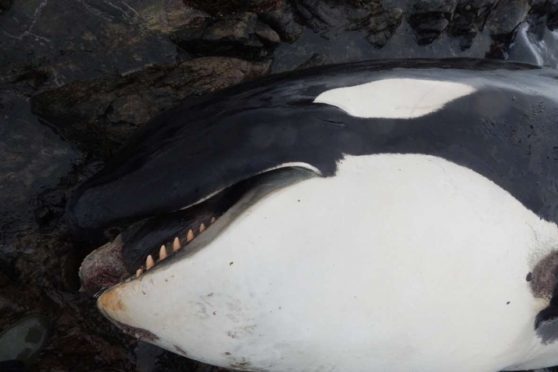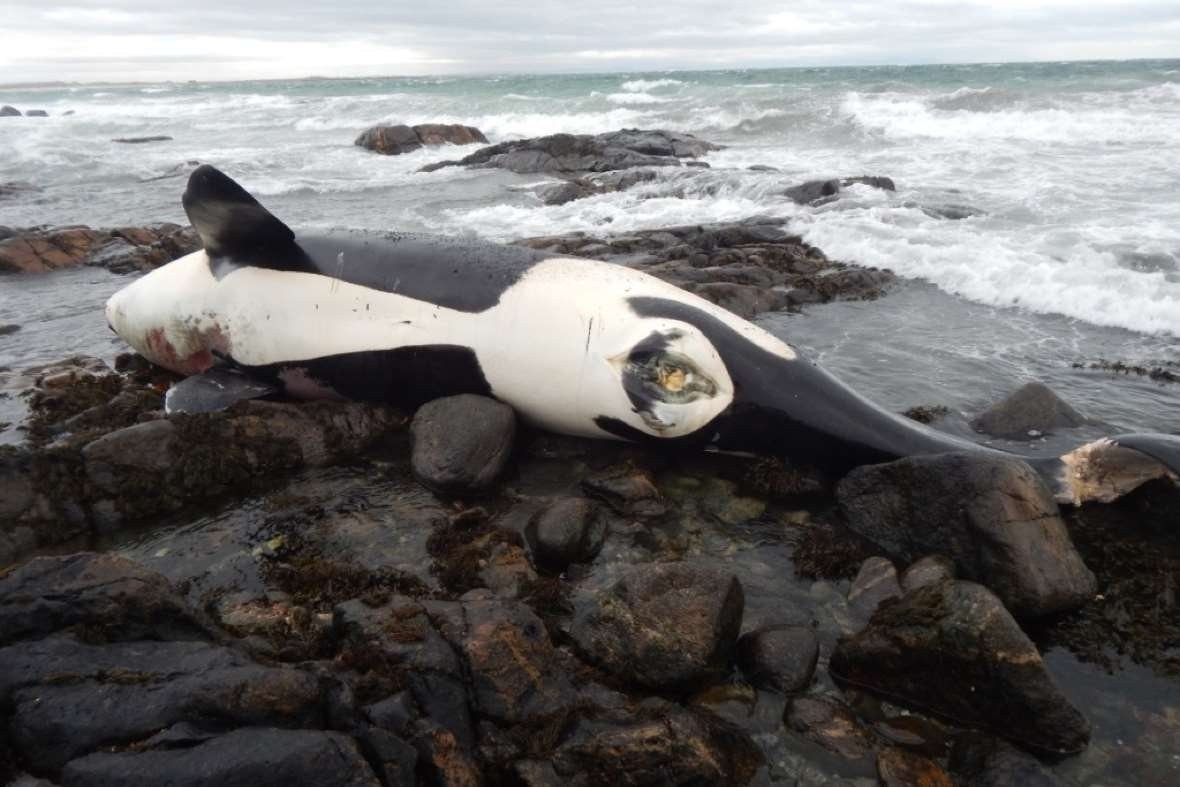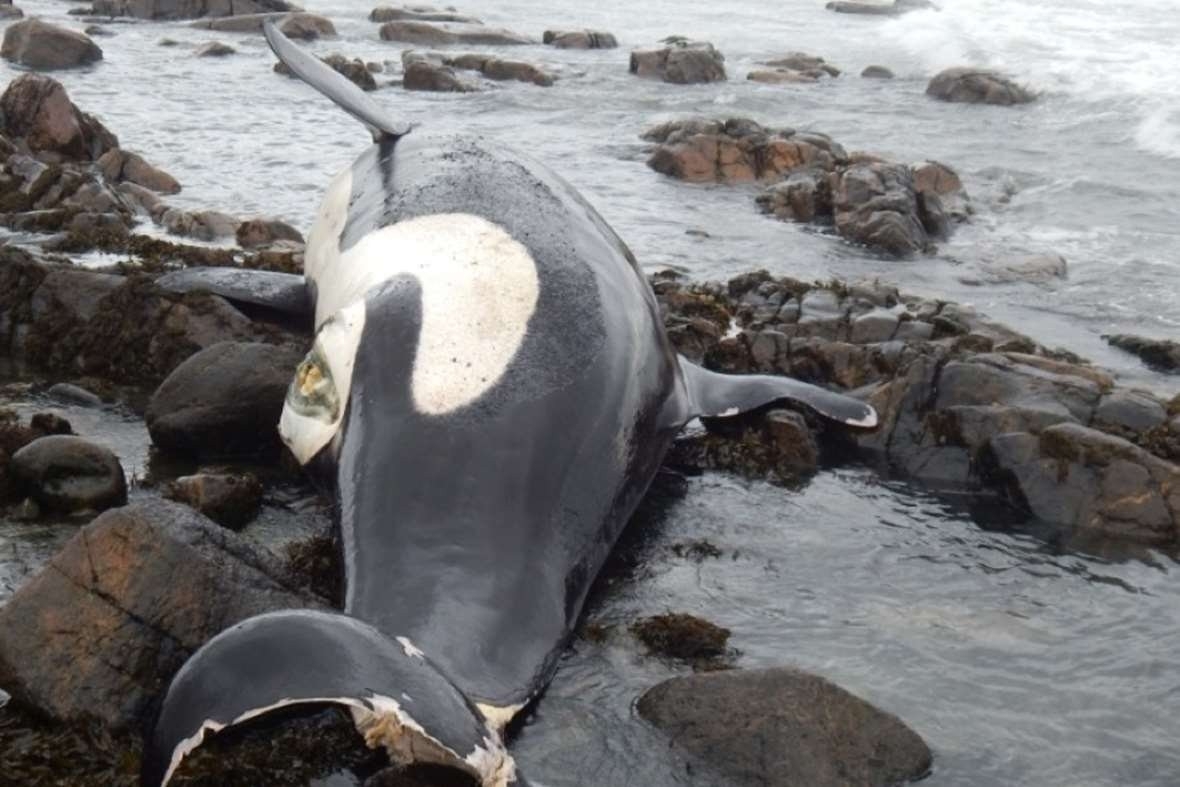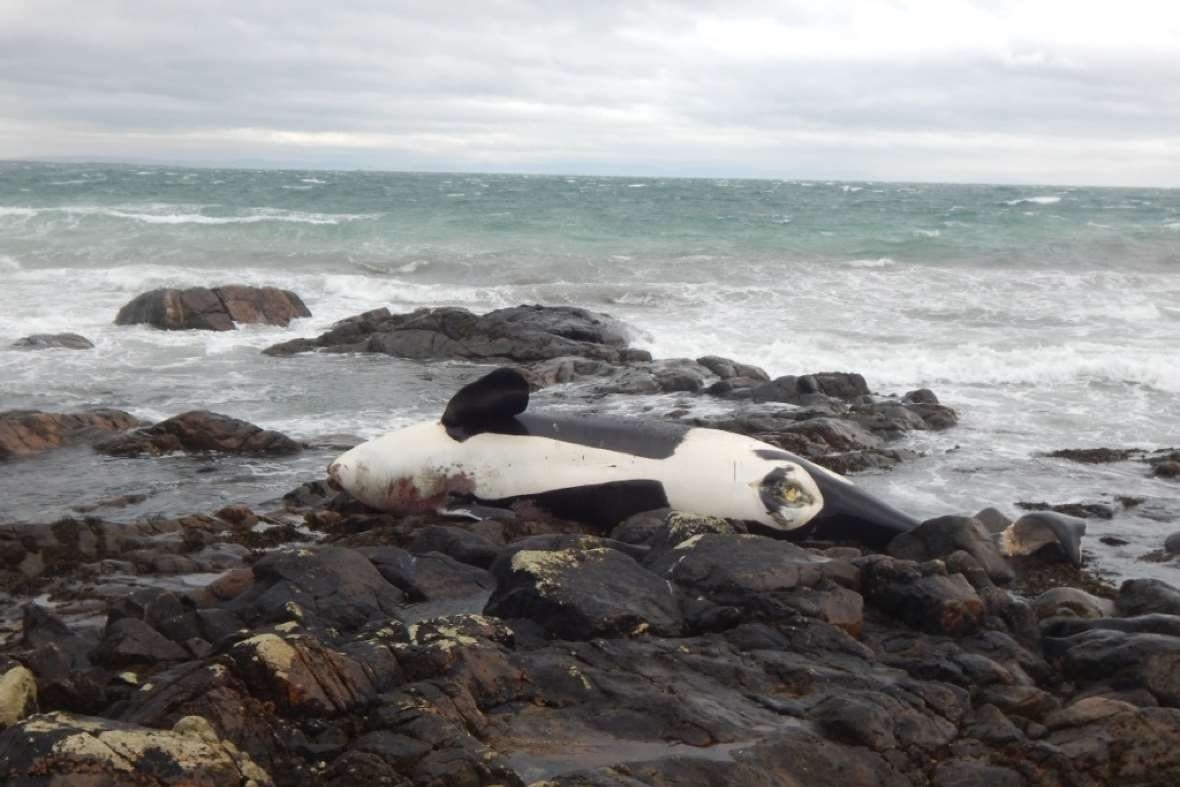One of the nine remaining resident killer whales in Scotland has been found dead on a beach in the Inner Hebrides.
The killer whale, known to researchers as Lulu, was discovered beached on the island of Tiree on Sunday (January 3).
Lulu was one of a pod of orcas that patrol the waters around the Hebrides and eastern Irish coast. Scientists now believe there might be just eight animals remaining in the pod, the only resident orca community in British waters.
The Hebridean Whale and Dolphin Trust said it was reasonably certain it was Lulu from the dead animal’s markings.
“We have some sad news to report,” it said in a statement “One of the West Coast community of killer whales known as Lulu was found dead on Tiree. Dr Andy Foote, a killer whale specialist, confirmed the photo-id match which was made using the distinctive eye and saddle patches which are unique to individuals.
“It is particularly sad to know that another one of these killer whales, unique to the British and Irish Isles has died. There may be as few as eight individuals remaining in this population.”
No calves have been born since researchers first began tracking the West Coast orcas in the 1980s, with some biologists claiming pollution in the water has led to high rates of infant mortality.
The Scottish Marine Animal Strandings Scheme is now hoping to conduct an examination to discover the cause of Lulu’s death.
Scotland’s only resident family of killer whales are doomed to die out.
The small, isolated population of five males – and now – three females have never produced offspring since studies began, raising fears that it faces imminent extinction. year Hebridean Whale and Dolphin Trust scientists observed one of the group’s males, known as John Coe, with a large area of his tail fluke missing.
Consultations with experts suggest that this was almost certainly the result of a shark attack. nine, now eight, Orca have failed to produce a single surviving calf in over 20 years and Dr Foote, a world-renowned expert on the species, believes time has run out for them.
The marine biologist – now based at the University of Copenhagen – has been studying the group with the Hebridean Whale and Dolphin Trust and the Irish Whale and Dolphin Group since 1992.
Scotland is also home to migrating Orcas.
Some killer whales have been discovered to regularly travel over 800 miles from Iceland each summer because they appear to prefer the taste of Scottish fish.
The Orca may simply want a change in diet as surprisingly they did not follow the summer movements of the Icelandic shoals of herring they were feeding on in winter, research has shown.
The paper – which has been co-authored by Dr Foote, formerly of the University of Aberdeen – says understanding the movements and distribution of killer whales is important for evaluating the threats they face, as well as their impact as top predators in different ecosystems.the research suggests that killer whales make the long trip from Iceland each summer for their liking of fish in Scottish waters.
“Killer whales in the Northeast Atlantic are thought to follow specific prey stocks but their seasonal movements are still poorly understood,” says the report published in Aquatic Biology.
“We used recent killer whale photographic data collected in Iceland and Scotland to show that some individual whales repeatedly move between these locations.
“Unlike other killer whales that appear to follow the movements of particular herring stocks, the whales we studied appear to feed on the Icelandic summer-spawning herring stock in winter, and then move outside the summer distribution range of this herring stock.
“Based on these new photographic recaptures and previously published movements of killer whales between Iceland and Scotland, we infer that movements between both locations have been occurring for several years at least.
“Although based on only seven identified individuals, our results provide the first evidence of regular seasonal movements between Iceland and Scotland, and suggest individual or group variability in the movement patterns of killer whales that prey on herring.
“Understanding killer whale movements will aid our understanding of prey specialization, the whales’ potential impacts on local prey resources, and their susceptibility to fluctuations in the availability of different prey species.”
The report adds:”Our results indicate that previously reported movements of killer whales between Iceland and Scotland are seasonal movements rather than permanent relocations.
“Individual killer whales were seen repeatedly moving between Iceland and Scotland, a distance of at least 1300 km, in several consecutive seasons.
“During winter, these whales were photoidentified over a period of up to four months at herring overwintering grounds in Iceland.
“Visual observations in Iceland (a total of 39 encounters) were of whales apparently feeding on herring, exhibiting the same behaviour as other whales: with circular movements and birds flying above them and picking up clearly identifiable herring. The whales then travelled to Scotland in spring and summer (April to August), and re-sightings within the summer suggest that at least some individuals were not just transiently passing through Scottish waters.
“These results indicate seasonal linkages between Iceland and Scotland where whales are presumably switching prey resources, either to a different herring stock or other prey species.
“Recent substantial changes in the ecosystem of the Northeast Atlantic Ocean, such as changes in mackerel distribution, which are a known prey of killer whales in some areas emphasize the importance of knowing the dynamics of killer whale diet for understanding and predicting their responses to variations in the availability of various prey.”



